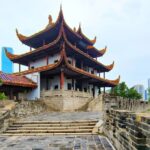
Juzi Island, located in Changsha, Hunan Province, is a narrow alluvial sand island in the Xiangjiang River. Historical records show that Juzi Island was formed in the second year of the Jin Dynasty’s Emperor Hui’s Yongxing era, as a result of swirling sand and stones accumulated by the rapid currents. As early as the Tang Dynasty, the island was renowned for producing delicious oranges, hence its name, Juzi Island (Orange Island). Surrounded by water on all sides and stretching for ten miles, Juzi Island faces Yuelu Mountain to the west and Changsha City to the east. Nestled between the famous mountain and the city, the island floats gracefully on the rippling waves, making it an important scenic spot in Changsha.

In ancient times, literati and scholars often boarded boats to visit the island, admiring its beauty while wielding their brushes to paint and compose poems. Li Xun, a late Tang Dynasty poet, described the island in his work “Fisherman’s Song · Reeds in Autumn,” writing, “Reeds in autumn, a night in Xiangjiang, the beautiful scenery of Juzi Island is like a painted screen.” The poet Du Fu also wrote about the island in his poem “Yuelu Mountain Daolin Two Temples,” saying, “The homes in Peach Blossom Spring are easily built, and the fields on Juzi Island remain fertile.”
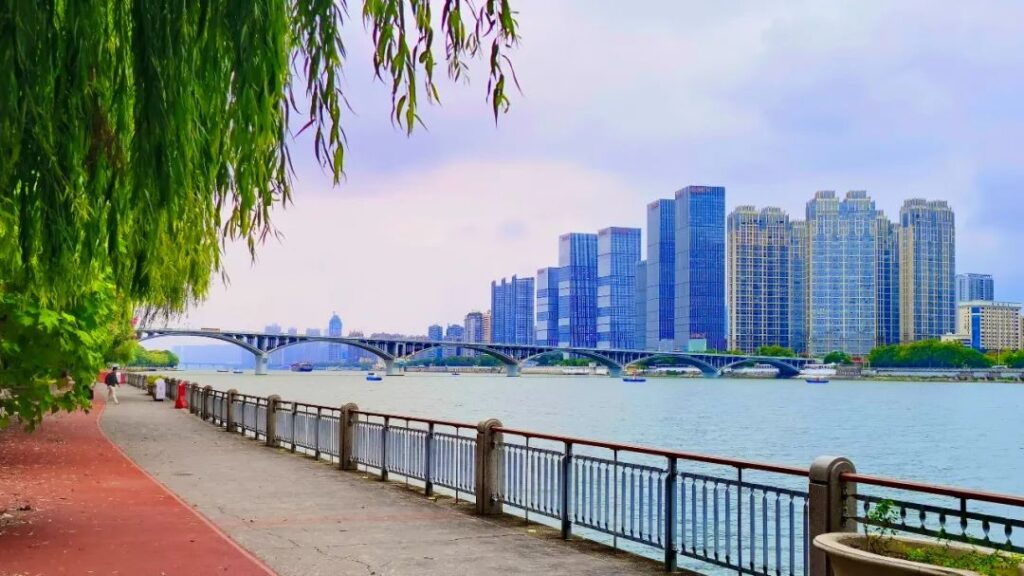
As a iconic attraction in Changsha, Juzi Island is like a jade belt floating on the Xiangjiang River. Although it is in the middle of the river, there is no need for a ferry, as the island is accessible via Juzi Island Station on Metro Line 2. One day in September, I arrived at Juzi Island, which is surrounded by water on all sides. I came here not only for leisure and sightseeing, to appreciate the beautiful scenery along the banks of the Xiangjiang River, but primarily to experience the sentiments of a great man.

Stepping out of the metro station and standing on the island, I gazed into the distance. The Juzi Island Bridge spans the Xiangjiang River, with one end connecting to the modern city of Changsha and the other to the lush Yuelu Mountain. At the foot of the mountain, numerous colleges and universities are gathered, where Hunan culture continues to thrive. The mountain, water, city, and island merge into one, like a flowing painting, a magnified landscape.
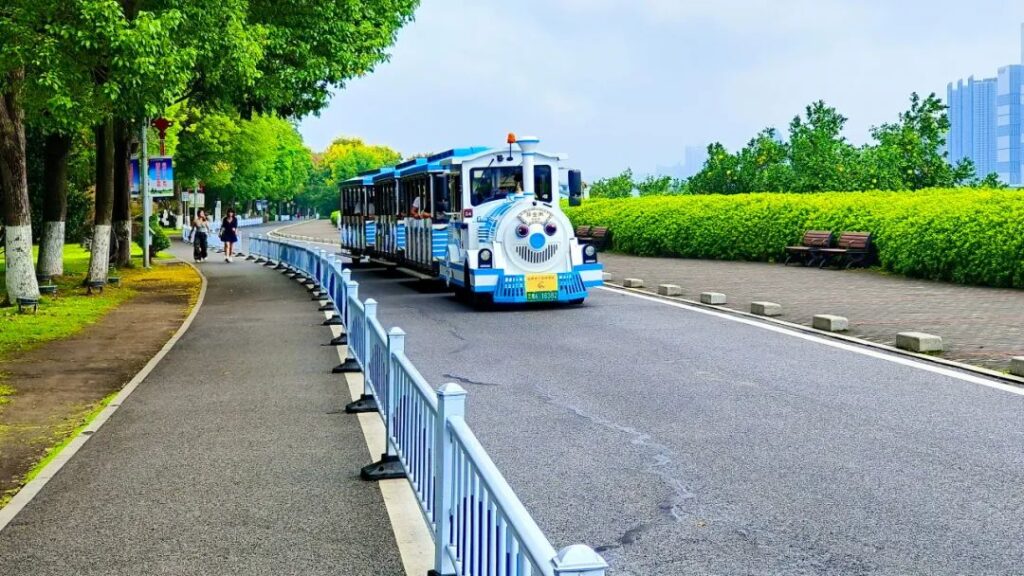
Juzi Island is a free city park in Changsha. Although there are many small scenic spots scattered across the island, most tourists come here for the statue of young Mao Zedong, and they often choose to take the small train. As someone who enjoys in-depth tours, I opted to walk, with the goal of learning more about Juzi Island and appreciating the beautiful natural and cultural scenery.
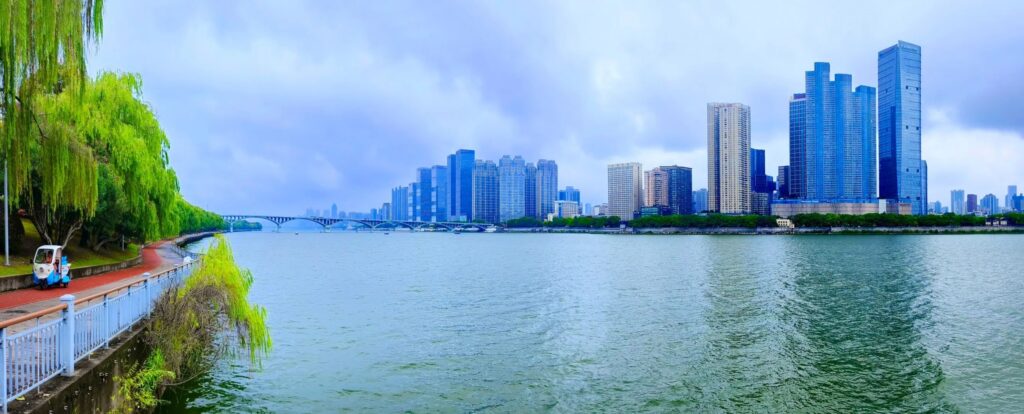
At this moment, the sky had cleared up, and the post-rain environment trail was tranquil and secluded. Walking along the trail, facing the cool breeze blowing from the river, listening to the endless sound of the river lapping against the shore, I walked and stopped, walked and looked, and took photos. It can be said that in Changsha, the place that I find most pleasing to the eye and the place where I linger and forget to return is none other than Juzi Island and the scenery on both banks.
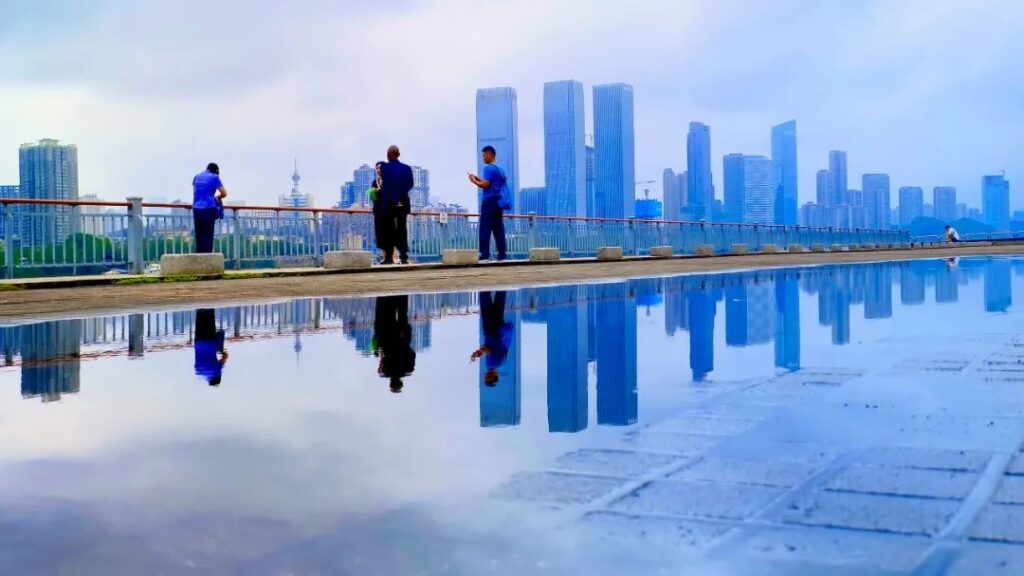
The humid air was filled with the fresh fragrance of flowers and plants on the shore. The willows on the shore swayed their green shadows, their drooping branches brushing the shore. The grass on the ground, after being washed by the rain, also appeared vibrant and full of life. Walking closer to the river and leaning against the railing to gaze into the distance, the surface of the Xiangjiang River shimmered with ripples, and the high-rise buildings in Changsha City on the opposite bank were half-hidden in the mist and smoke, like a faint freehand landscape painting.
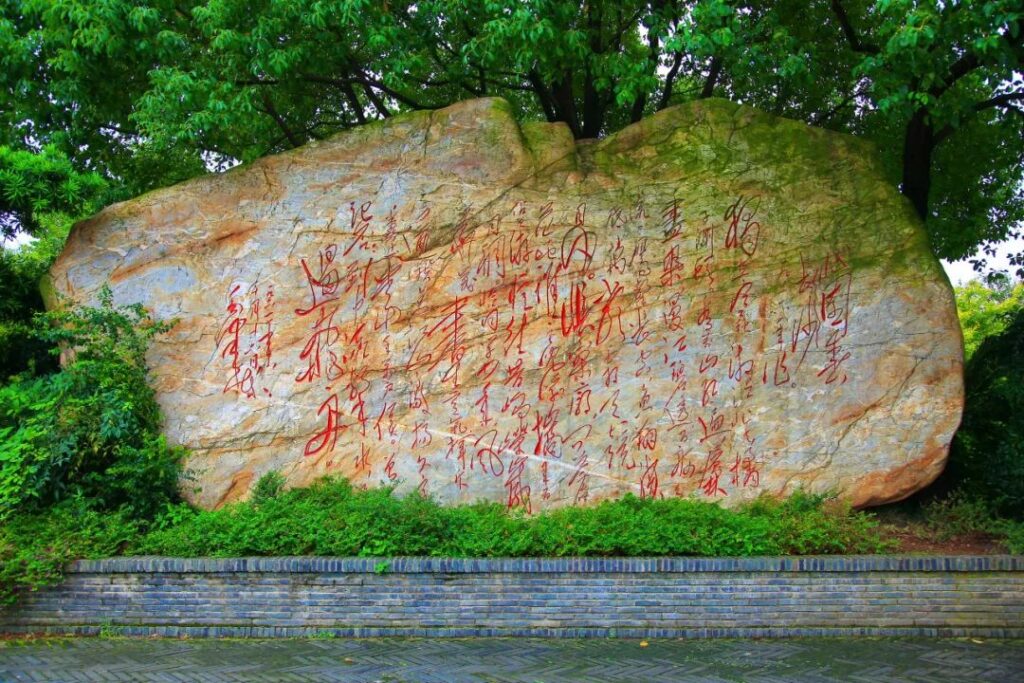
In the southern square of Juzi Island, there is a huge natural stone tablet inscribed with Chairman Mao’s handwritten “Qinyuan Spring · Changsha” from 1961. The calligraphy on the tablet is powerful and vigorous, with bold and unrestrained characters and naturally flowing lines, like dancing dragons and snakes, completed in one stroke. The tablet is made from a single massive piece of natural yellow wax stone from Yingde, Guangdong. The huge stone tablet perfectly complements Chairman Mao’s calligraphy, appearing naturally harmonious.

Chairman Mao studied at the First Normal School of Hunan in his youth and often enjoyed swimming in the Xiangjiang River with friends like Luo Xuezhan, Zhang Kundi, and Cai Hesen. They would visit Juzi Island and discuss current affairs at length. In the autumn of 1925, 32-year-old Chairman Mao left Shaoshan to preside over the Peasant Movement Training Institute in Guangzhou. While passing through Changsha, he revisited Juzi Island. Facing the rushing Xiangjiang River, his heart surged with emotion, and he wrote the widely-known “Qinyuan Spring · Changsha.”

Juzi Island is home to many historical relics. In the late 19th century, the Qing government implemented the “Self-Opening Treaty Ports” policy, opening the port of Changsha and establishing the Changsha Customs. The Changsha Customs Tax Commissioner’s Residence was built on Juzi Island, consisting of two small buildings. The design incorporates elements of traditional Chinese architecture while incorporating 19th-century British architectural styles. Today, it has become the Changsha Customs Modern History Exhibition Hall.
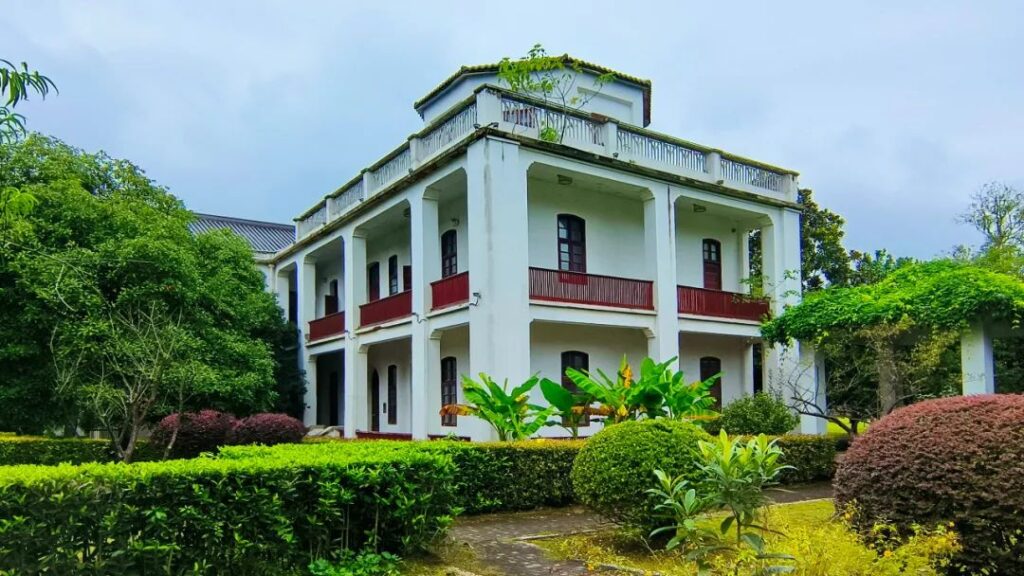
The Tang Shengzhi Residence is a Chinese-Western fusion-style villa built in 1926. Tang Shengzhi joined the Tongmenghui (Chinese Revolutionary Alliance) early on and participated in the Xinhai Revolution, the National Protection War, and the Constitution Protection Movement. Tang Shengzhi made significant contributions to the peaceful liberation of Hunan and later served as the Vice Chairman of the Hunan Provincial People’s Government and the Vice Governor of Hunan Province.
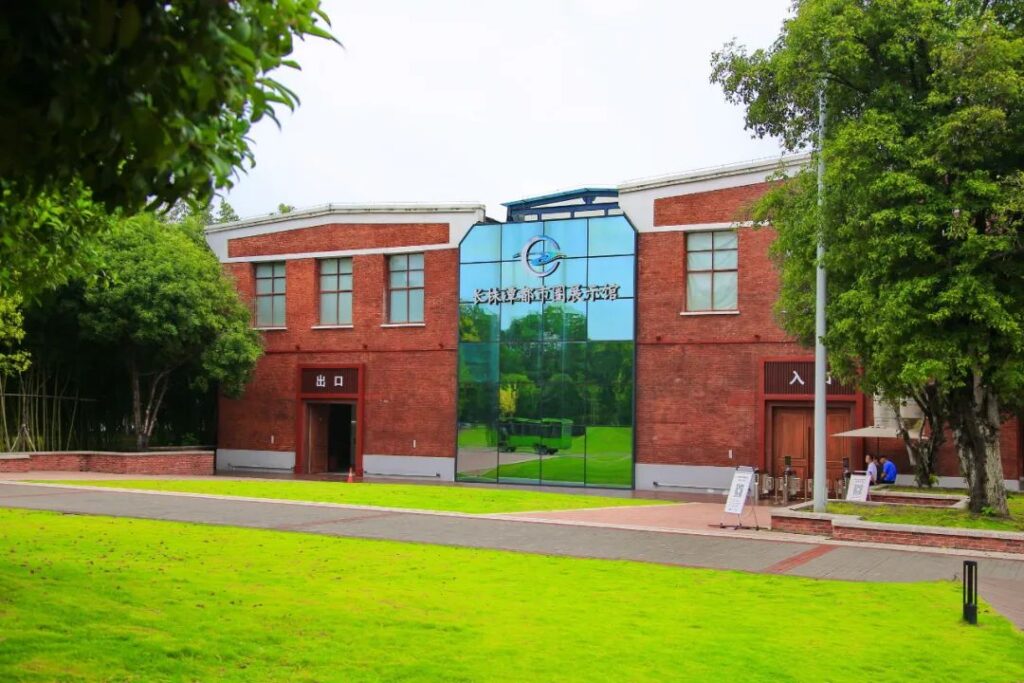
The Tianlun Paper Mill was established by the industrialist Peng Yujie in 1947 on the former site of the Hunan Paper Mill. It was one of the largest privately-owned factories in Hunan Province at the time. After the founding of the People’s Republic of China, the Tianlun Paper Mill signed a public-private partnership agreement with the Hunan Branch of the People’s Bank of China, becoming the earliest public-private partnership enterprise in Changsha. Today, the Tianlun Paper Mill has been transformed into the Changsha-Zhuzhou-Xiangtan Metropolitan Area Exhibition Hall.
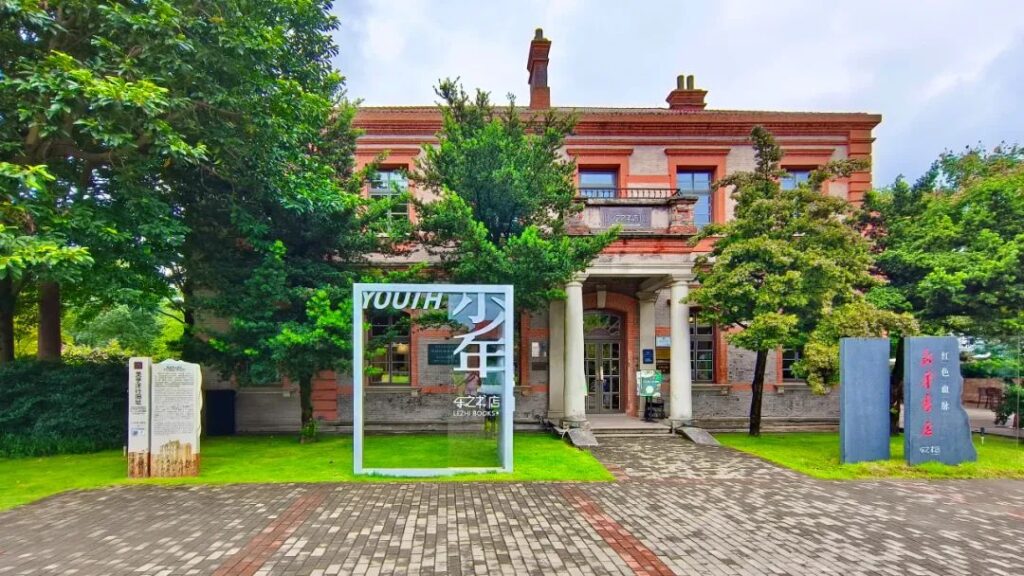
The former site of the Mobil Corporation is located in the central part of Juzi Island and is a European-American-style building constructed in 1924. Mobil is a well-known American oil company and one of the world’s earliest multinational corporations, with branch offices all over the world. In the past, petroleum products used in China were monopolized by foreign companies like Mobil, and people referred to them as “foreign oil.”
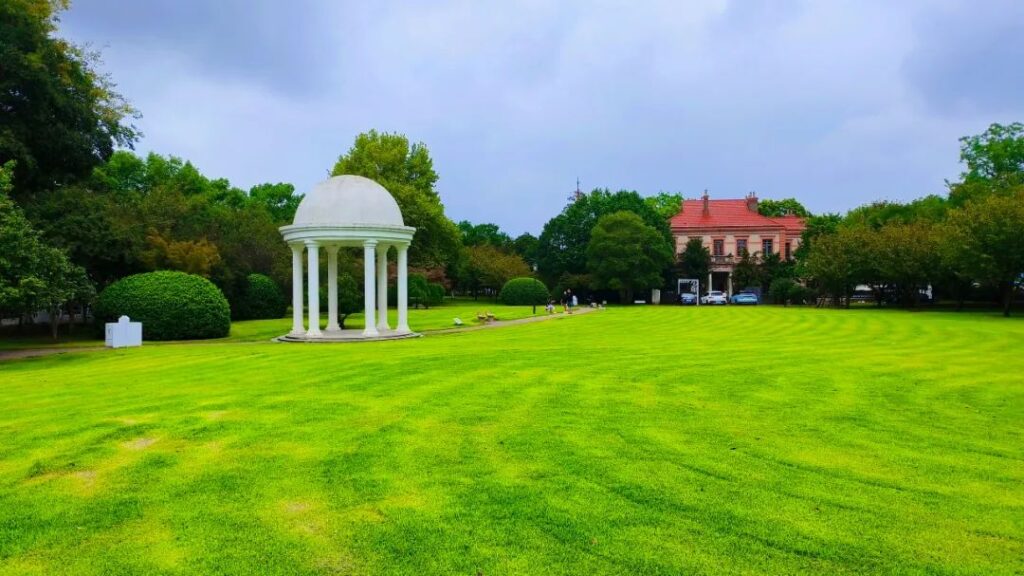
Surrounding the former site of the Mobil Corporation is the Juzi Island Wedding Garden, which consists of a ceremony hall, lawn, garden, villa, pavilion, and observation deck, with lush green trees and an elegant environment. The Wedding Garden is a romantic place for newlyweds to hold their weddings and receive blessings from relatives and friends. It is also the top choice for couples about to enter the marriage hall to take wedding photos.
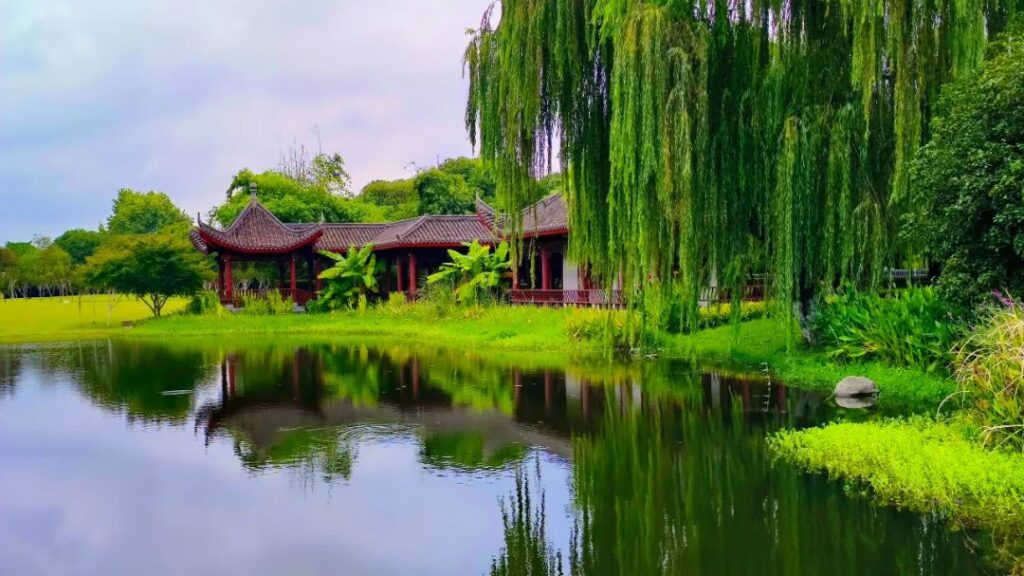
The Zhu-Zhang Ancient Ferry is a sightseeing and commemorative spot in the Juzi Island Scenic Area, commemorating the famous “Zhu-Zhang Lecture” in the history of Chinese Neo-Confucianism. During the Southern Song Dynasty, the great Neo-Confucian master Zhu Xi traveled from Fujian to Tanzhou (Changsha) to discuss and debate with fellow Neo-Confucian scholar Zhang Shi on the lecture platform of the Yuelu Academy. During this time, Zhu and Zhang frequently traveled back and forth between the two banks of the Xiangjiang River. The Zhu-Zhang Ancient Ferry plays an important role in Hunan culture.
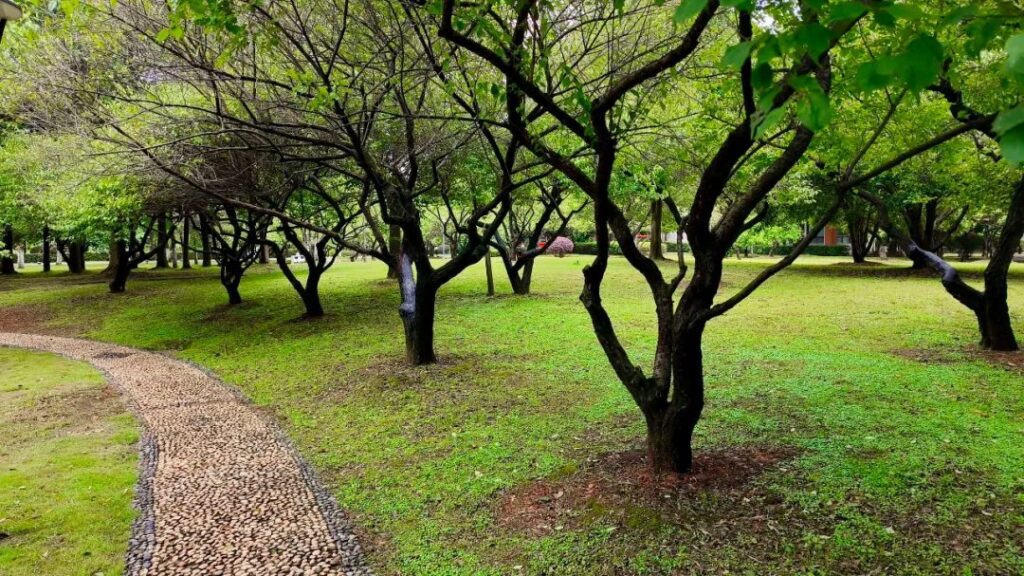
The Juzi Island Scenic Area also features special garden areas such as the Plum Garden, Bamboo Garden, Orange Garden, and Osmanthus Garden. The Plum Garden on Juzi Island is the largest plum blossom viewing spot in the Changsha area, with more than 600 plum trees of 14 varieties planted, including beauty plum, weeping plum, wandering dragon plum, red plum, and green plum. Every spring, the scenery in the garden is enchanting, with patches of plum blossoms resembling faint red clouds floating on the Xiangjiang River.
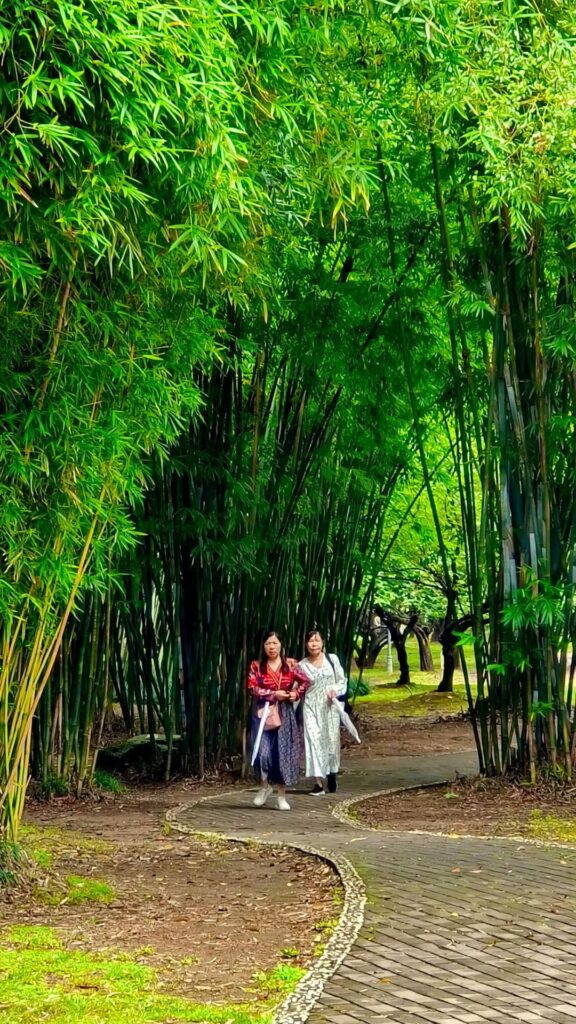
Following the winding forest trail and passing through the plum groves, I arrived at the Bamboo Garden. The Bamboo Garden on Juzi Island is the most comprehensive bamboo garden in Hunan, with more than 60 varieties of precious and local bamboo. The bamboo in the garden grows in clusters and clumps, lush and verdant, with dense layers of bamboo leaves enveloping the entire garden in a sea of green.
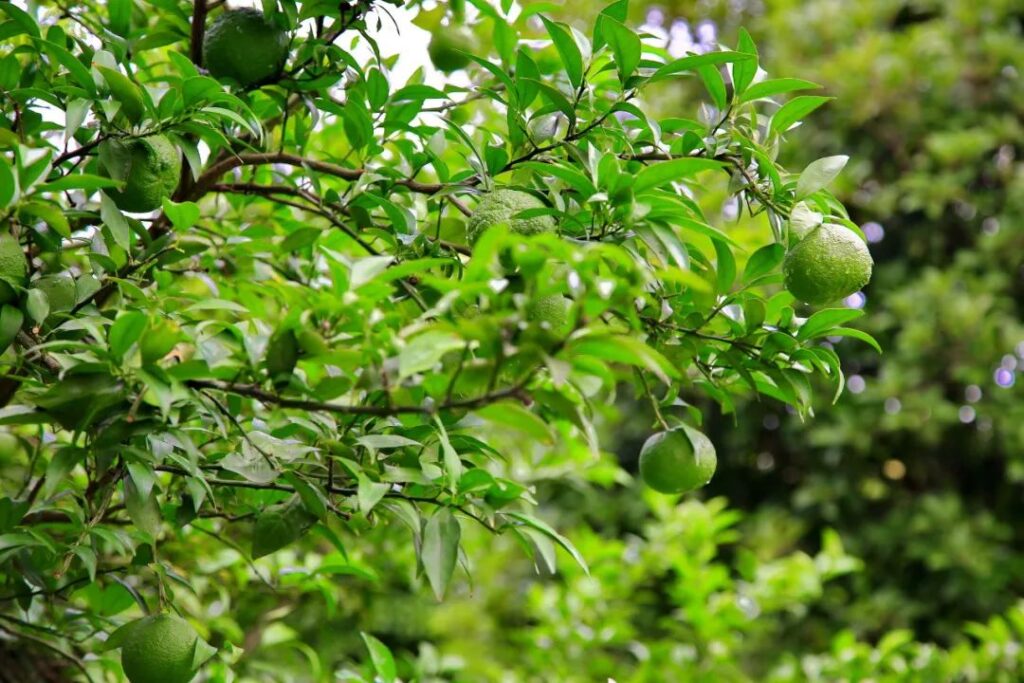
The Orange Garden spans hundreds of acres across Juzi Island, connecting various scenic spots and mainly distributed in areas such as the Sculpture Square and the Juzi Island Cultural Park. The garden contains 42 excellent varieties of tangerines, more than 10 excellent varieties of pomelos, and more than 10 varieties of oranges. By planting multiple different varieties of orange trees, the theme of Juzi Island is strengthened, creating a scene where natural landscapes and cultural landscapes blend together.
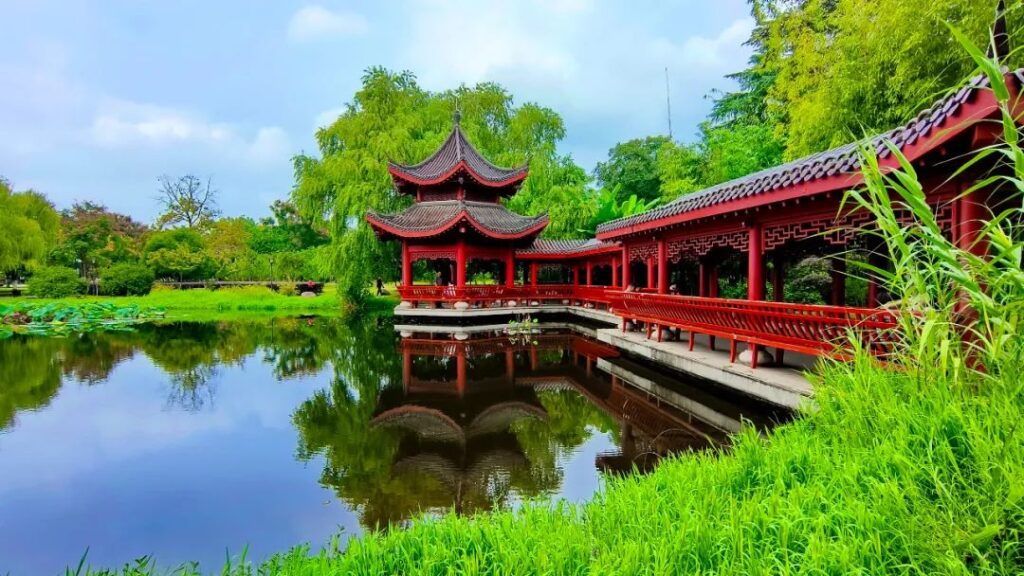
The Pillow River Pavilion is located at the northern end of the Juzi Island Citrus Culture Park. It is a group of ancient-style pavilion buildings composed of corridors and pavilions, named after the phrase “Resting on the river’s heart, one can hear the surging waters of the Xiangjiang River going north and see all things competing for freedom in the frosty sky.” The Pillow River Pavilion stands by the water, well-arranged and natural, with a strong Jiangnan garden style.
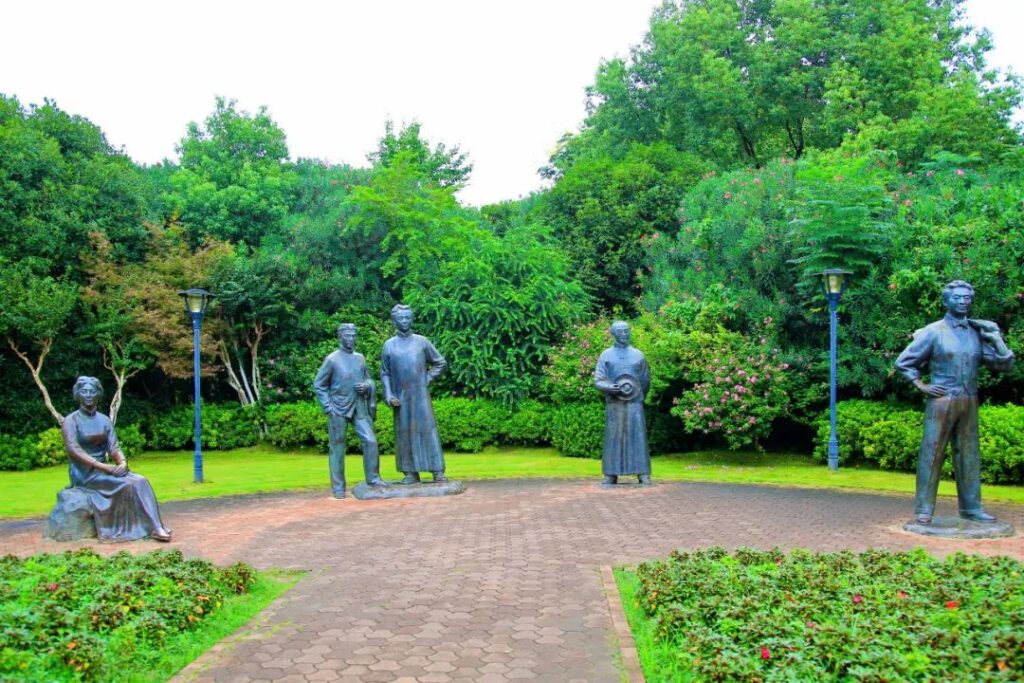
The “Who Dominates the Rise and Fall” sculpture group consists of statues created based on the five initiators of the New People’s Study Society: Mao Zedong, Cai Hesen, He Shuheng, Xiang Jingyu, and Xiao San. The statues are lifelike, standing amidst the green grass, with flowers nestling and orange groves accompanying them. The study society was established in 1918 with the aim of “transforming China and the world,” and many of its members later joined the Chinese Socialist Youth League.
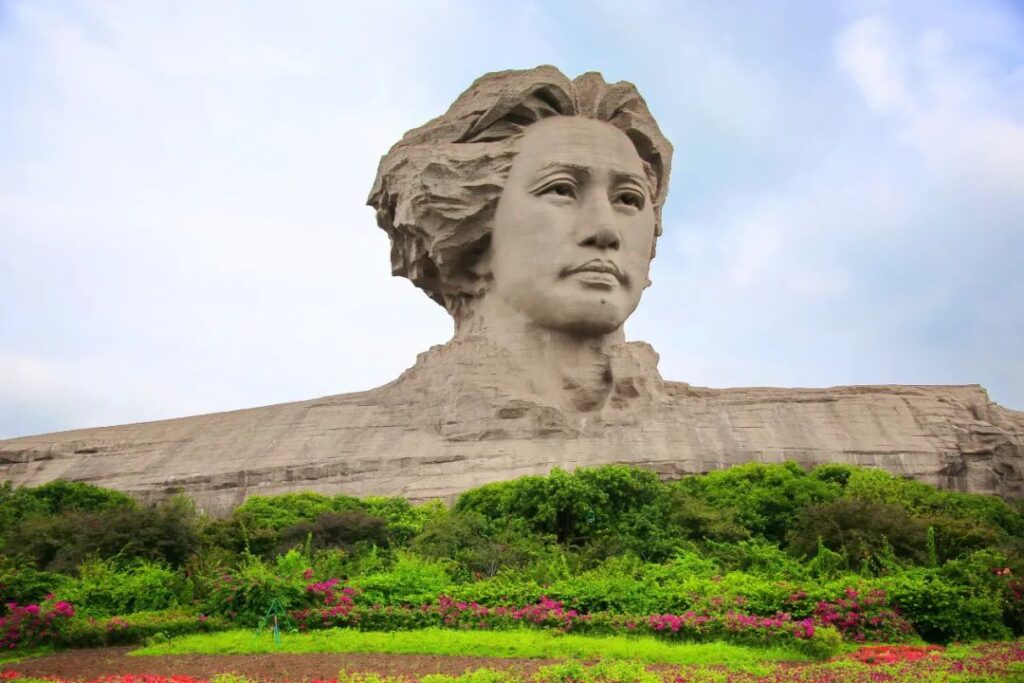
Moving forward, one arrives at the famous Juzi Island Head. The Young Mao Zedong Statue is based on the image of Mao Zedong in his youth in 1925, with a strong visual effect and artistic appeal. The entire sculpture resembles a towering mountain, with the bust transforming into a rising peak. The young face, flowing long hair, and deep gaze look towards the rising sun in the east.

The Young Mao Zedong Statue is currently the largest artistic statue of a great man in China, with a height of 32 meters, a width of 41 meters, and a length of 83 meters, symbolizing that Chairman Mao was 32 years old when he wrote “Qinyuan Spring: Changsha,” ruled for 41 years, and passed away at the age of 83. The size of each stone is 1.2:2.6, the same as Chairman Mao’s birthday on December 26. The stone used is Fujian Yongding red granite, symbolizing the eternal red rivers and mountains.

The River View Pavilion is an ancient-style building composed of pavilions and corridors, serving as a landmark of Juzi Island Head. The pavilion has a four-cornered heavy eaves and a pointed top, golden glazed tiles, flying eaves and upturned corners, decorated with carved windows, simple and elegant. There are corridors on both sides of the pavilion for tourists to rest. It is said that the River View Pavilion was first built in the Tang Dynasty, and one of the eight ancient Xiaoxiang sceneries, “River and Sky in Evening Snow,” was located here. The current River View Pavilion was rebuilt in 2008.

The Asking Heaven Platform is a waterfront platform at the front end of Juzi Island, almost invisible due to being nearly ten meters lower than Juzi Island Head. The Asking Heaven Platform is named after the famous line “Asking the vast earth, who dominates the rise and fall” from Chairman Mao’s poem “Qinyuan Spring: Changsha.” This is the best spot for viewing the river up close. Standing on the Asking Heaven Platform and looking far along the river, the waters of the Xiangjiang River are vast and boundless, and the Yuelu Mountain is lush and endless. A sense of vigour and vitality will spontaneously arise from the bottom of one’s heart.
